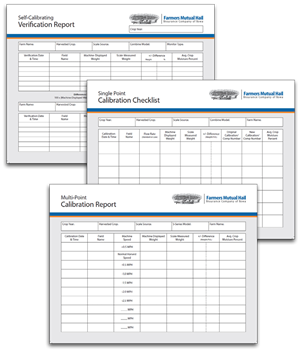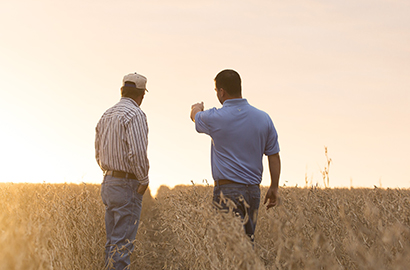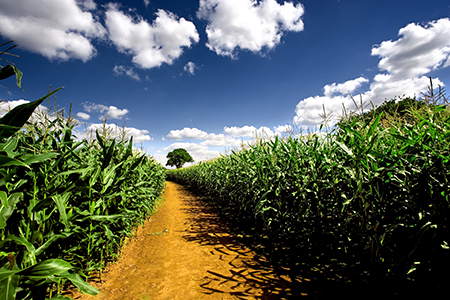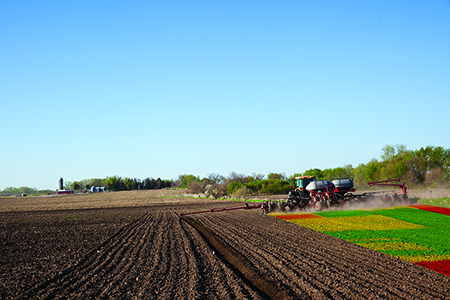Self-calibrating combines entered the market last year. If a farmer has a self-calibrating combine or the proper equipment and system to convert an existing combine into a self-calibrating machine, documenting calibration records for a Precision Claim are slightly different, but still required.
What are the differences between a self-calibrating combine and a standard precision-equipped combine?
With a standard yield monitor, the farmer needs to weigh each load on a certified scale, and then manually enter the weight back into the monitor to be able to calibrate to ensure accuracy.
With a self-calibrating setup, the combine has load sensors in the grain tank that continuously weigh the load as the farmer harvests, and the yield monitor automatically calibrates based on the weight information being collected. As conditions in the field change, the monitor captures that information and continues to automatically calibrate according to the new data. There is typically no manual entry needed by the farmer.
How does a self-calibrating setup affect the calibration records required by RMA for Precision Claims?
RMA requires proof that the combine is within 3% accuracy for each crop at the start of the season. To do this, a farmer needs to use a certified scale – not the scale in their self-calibrating combine.
They will still need to weigh their combine load on a certified scale, but rather than enter that information into their monitor, they just need compare it to what the monitor is reading and mark it on a form. The farmer can use FMH’s new Self-Calibration Report form to track their information.
 FMH Calibration Report Forms
FMH Calibration Report Forms
FMH Calibration Report Forms are available as fill-able PDFs (click below). FMH agents can order paper and folder forms through the FMH Online Store.
- Single-Point Calibration Report Form
- Multi-Point Calibration Report Form
- Coming Soon! Self-Calibration Report Form





